Following newly adopted EU climate targets, the Commission has just put forward a new package of legislations aimed at making the EU fit for 55 % of GHG reductions by 2030. This new set of proposals will be key for this decade to come as, by 2030, we’ll already have to achieve a large chunk of the GHG reductions needed to reach climate neutrality by 2050. Indeed, the EU has decided to accelerate the decarbonization of many areas of our economy that are technologically well within reach, such as buildings or passenger road transport.
Electrical contractors should feel quite involved by these new legislative proposals as they could lead to unprecedented growth for their businesses, provided the adequate supportive regulatory framework is put in place, especially regarding electrotechnical skills. Without the latter, electrical contractors could struggle to meet demand for the necessary clean energy technologies, which won’t be deployed at the needed pace, hindering GHG reductions and climate action.
With this package, a revised Renewable Energy Directive (RED) has been proposed to increase the binding EU-wide target for renewables in the energy mix to 40% and to set out an indicative target of 49% of renewables in buildings’ energy consumption, both by 2030. While it is unfortunate that the EU does not set national binding targets, EuropeOn is happy to see the EU showing increased ambition in this regard. The Energy Efficiency Directive (EED) has also undergone a review to increase ambition in line with climate targets, but again misses the mark on national binding targets. It however seeks to increase renovation rates of public buildings to 3% annually. Finally, with regard to mobility, new CO2 standards of 0 gCO2/km have been proposed for 2035, marking the end of new fossil car sales in Europe making EVs the main option for motorists. Alongside this proposal, the Alternative Fuels Infrastructure Directive has been turned into a Regulation, meaning it will have a more direct legal effect. Electrical contractors will feel this direct effect as this regulation now comes with binding targets for public recharging infrastructure for EVs (cars, vans, and trucks).
There is a lot of ambition in this package and, for electrical contractors this could be a turning point. But, as anyone active in our sector knows, there is a challenge on the way to this potential green growth as many new professionals will need to be hired and the latter will need new, more sophisticated green and digital skills to handle the latest clean energy devices. EuropeOn has endeavored to provide an estimate of the needs for human capital between 2020 and 2030, based on industry projections and policy targets. For rooftop solar alone, about 225.000 extra professionals will be needed and to roll out EV chargers, at least 112.000 more are required. In parallel, we have estimated that doubling renovation rates across Europe, as the EU plans to do with the Renovation Wave, will rely on an extra 270.000 electrical professionals.
This begs the question of how those positions will be filled given the urgency of decarbonization and the magnitude of the human capital needs. While providing the suitable framework to match our available workforce with the coming scale up of electrification is more of a national competence, the EU has still sought to address this issue in the RED and EED, but only to a limited extent.
Indeed, the revised RED proposal holds Member States responsible to ensure the sufficient availability of training programs and are mandated to ensure participation in the latter, to make sure that enough installers are around.
However, there is one alarming restriction in this article: it only pertains to training programs for heating and cooling installations. While these are key technologies that rely on qualified installers, the scope of these training provisions must be extended to all electrified and clean energy technologies. There is no reason to overlook other digital and green solutions that can drive GHG abatement as well as consumer empowerment and energy savings. Indeed, solar panels, EV charging points and energy management devices are also key for the energy transition and require careful installation, integration and maintenance. Further, the Commission should refrain from encouraging a silo approach that considers training and skills for each technology separately. Our buildings are becoming smart and digitalization will be a cornerstone of the decarbonization of our economy, as it allows for increased integration and efficiency.
The idea is not to have solar panels on one house and a heat pump in the next, the best pathway to climate neutrality is to have both solar and a heat pump in the same house, ensuring that heating can be powered by on-site solar. This is the way forward: heating is renewable, efficient, does not weigh on energy grids or networks, and brings savings, engagement and autonomy to consumers.
Our energy systems, buildings and vehicles are becoming increasingly interconnected. This is the necessary condition if we want to stand a chance at decarbonizing our economy while preserving consumer acceptance. This future starts with a revamped and more comprehensive approach to education, skills and training. As explained in our #Skills4Climate campaign, more funding is needed for technical education to increase its quality, attractiveness and enrollment. National governments must also dynamically review curricula in cooperation with social partners and employers’ associations to keep skills up to date with fast-paced innovation in the energy sector.
In a net-zero world, electrification will be ubiquitous and highly skilled electrical contractors will be needed in great numbers and across Europe’s regions to ensure that our economy keeps turning. As our policymakers are planning our energy future, they must address our workforce and their skills now and without delay.
